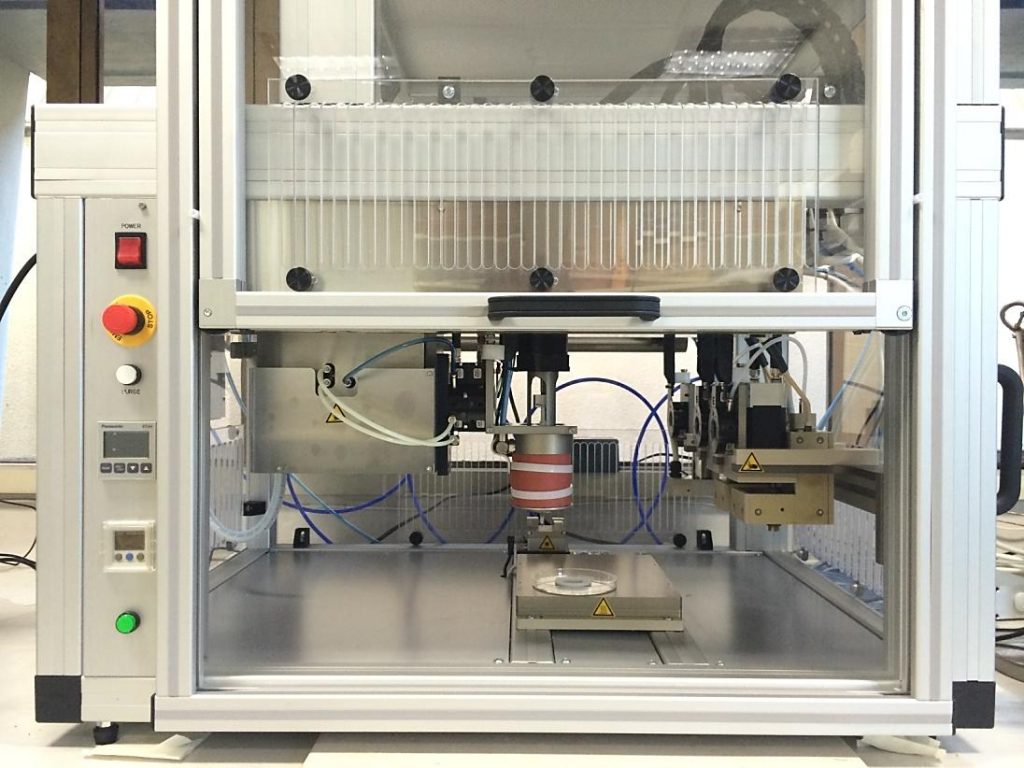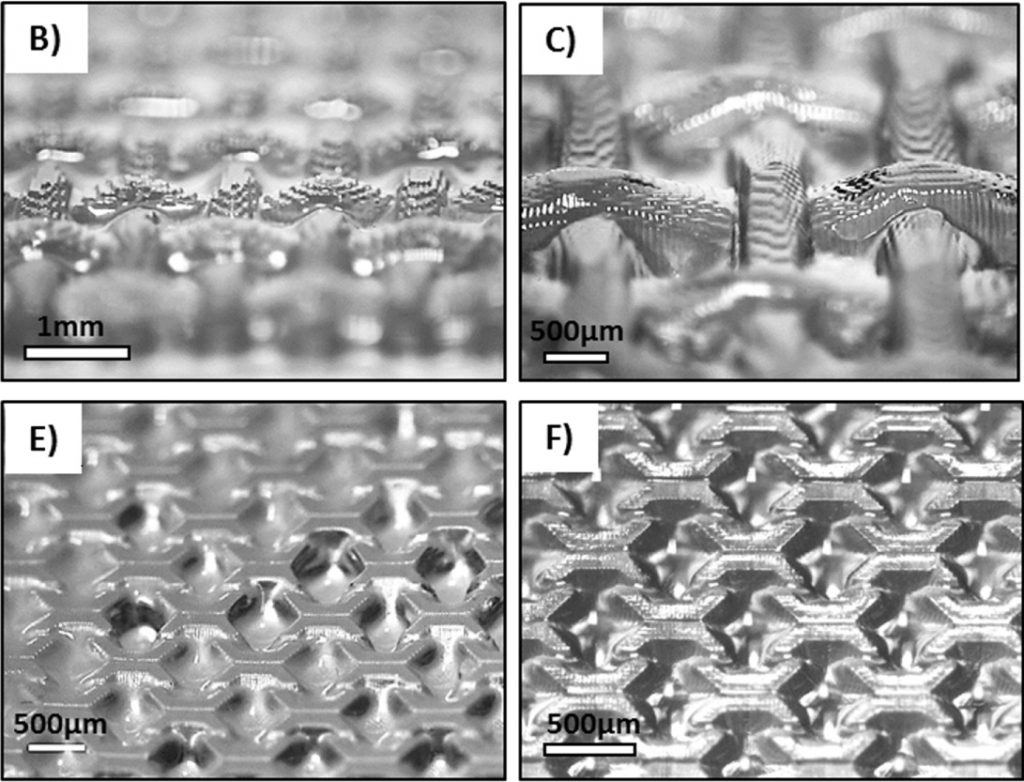At the University of Otago Christchurch, New Zealand, a team of researchers have developed a 3D printable resin that can accurately copy small features of the human body.
Pre-loaded with cells, the resin acts as a cell building block for growing synthetic tissues, which can then be used for experimentation and, potentially, regenerative therapies.
Otago lead researcher Tim Woodfield says the new material is capable of 3D printing structures at micro-scale unrivalled by other bioprinting techniques.
High definition 3D bioprinting
Though 3D bioprinting shows great potential for the reproduction of human tissues, it is still difficult to create structures that can exactly mimic cellular microstructure, especially with technologies like FDM/FFF.
To give an example, a typical human skin cell measures between 25 and 40 μm2 – which is 10 – 25μm smaller than the diameter of a human hair.
3D printed using DLP technology, the Otago resin creates features typically between 25 to 50 μm, structures that, according to Woodfield “cannot be fabricated using extrusion bioprinting.”

Christchurch Regenerative Medicine and Tissue Engineering Group. Photo via University of Otago Christchurch
3D printed bone and cartilage
The Otago resin is made from two different types of hydrogel. For 3D bioprinting, the resin is also loaded with stem cells, which are encouraged to grow and multiply.
Together, the hydrogels provide the perfect environment for keeping over 90% cells alive over a period of 21 days.
The most recent study of the material also proved that the resin is capable of performing bone and cartilage tissue synthesis.
A new platform for drug testing
An important complication overcome by the Otago research is the elimination of cell-damaging ingredients that are otherwise included in DLP/SLA resins.
Dr. Khoon Lim, lead author of the study, explains, “These resins often contain organic solvents or toxic chemicals and require photo-initiators that are only soluble in toxic organic solvents,”
“To make our resins ‘bio’, we employed a combination of macromers (photo-responsive PVA-MA and Gel-MA) and the photo-initiator ruthenium. All these components are water soluble and not cytotoxic to cells.”
The next step of the study is to apply the material to 3D print liver and cancer models for drug testing and further research.

A 3D bio-evolution
Applying lithography to 3D biofabrication is becoming an imminent trend in the medical research sector.
The technique is proving especially viable in microfluidic applications. Recently, 3D Printing Industry also interviewed Brigham and Women’s Hospital and Harvard Medical School researcher Yu Shrike Zhang, about SLA-based 3D bioprinting.
The paper supporting Otago’s research, “Bio-resin for high resolution lithography-based biofabrication of complex cell-laden constructs,” is published online in Biofabrication journal. It is co-authored by Khoon S Lim, Riccardo Levato, Pedro F Costa, Miguel D Castilho, Cesar R Alcala-Orozco, Kim M A van Dorenmalen, Ferry P W Melchels, Debby Gawlitta, Gary J Hooper, Jos Malda and Tim B F Woodfield.
For more cutting edge materials research subscribe to the 3D Printing Industry newsletter, follow us on Twitter and like us on Facebook.
Sign up to 3D Printing Jobs to post and find new opportunities near you.
Featured image shows high definition microstructures 3D bioprinted in the new Otago resin. Image via PhysicsWorld



